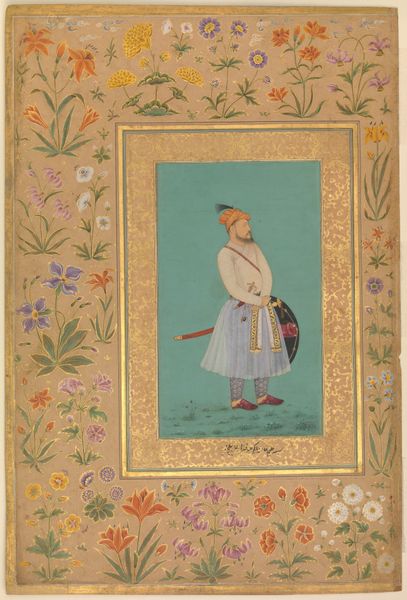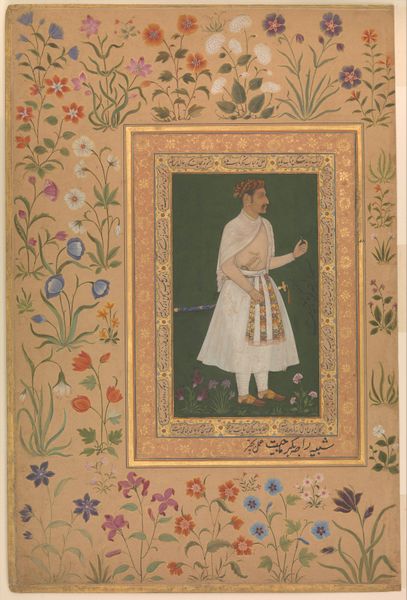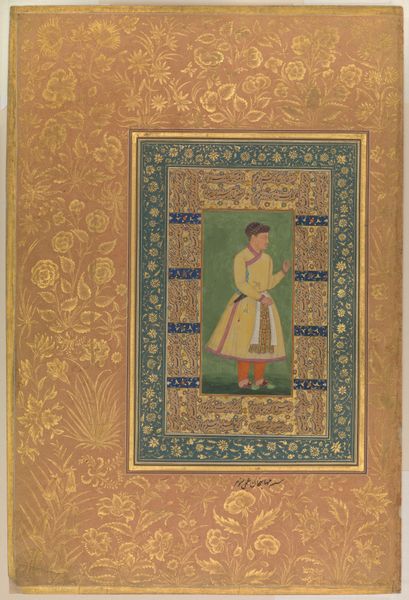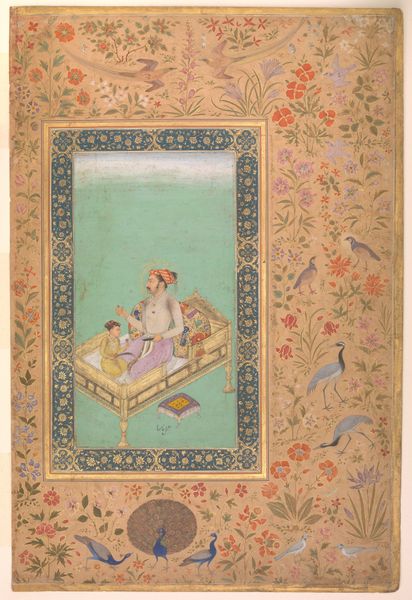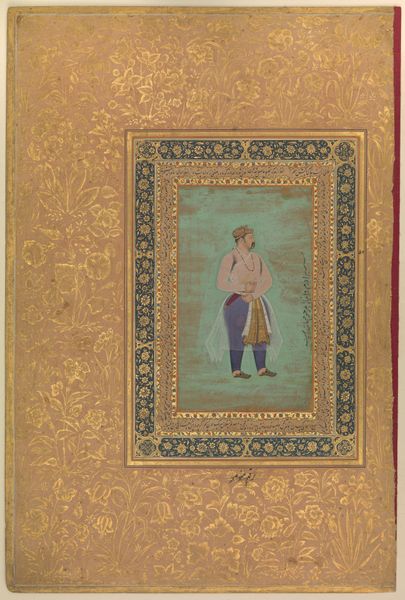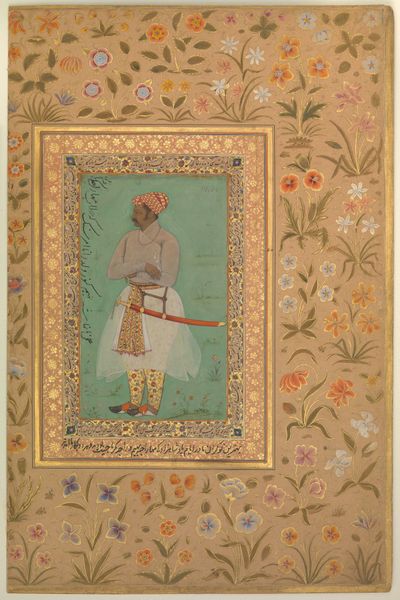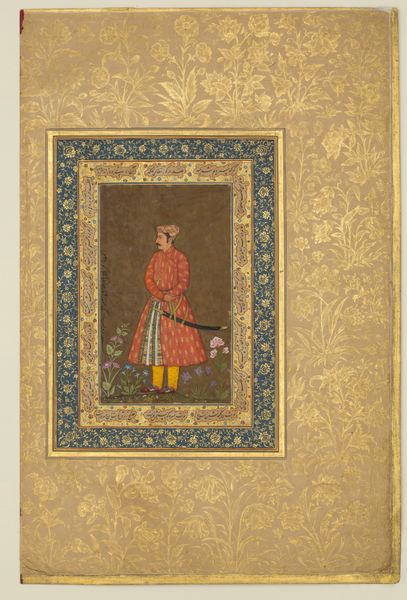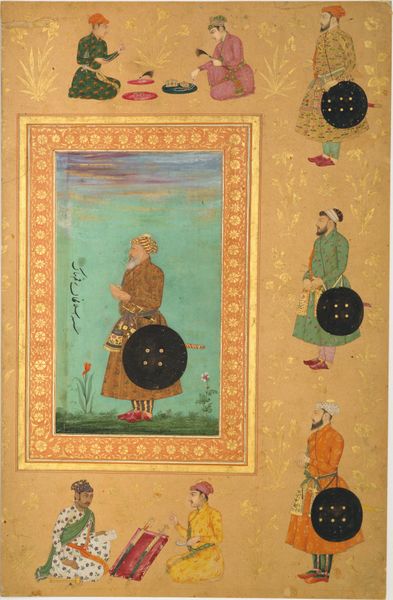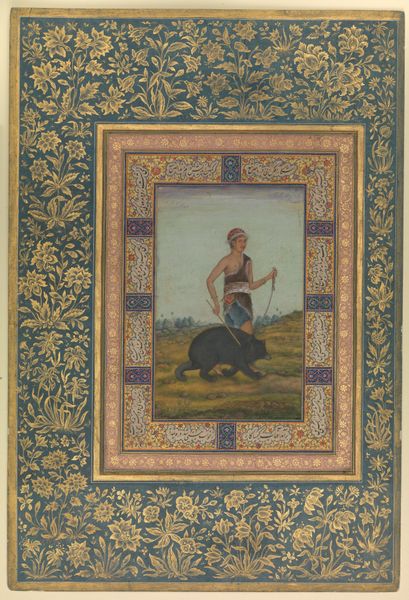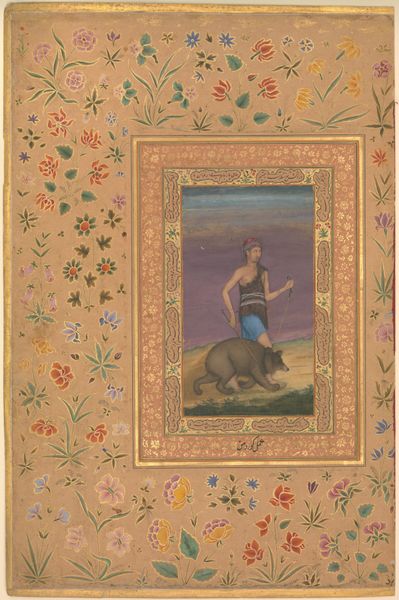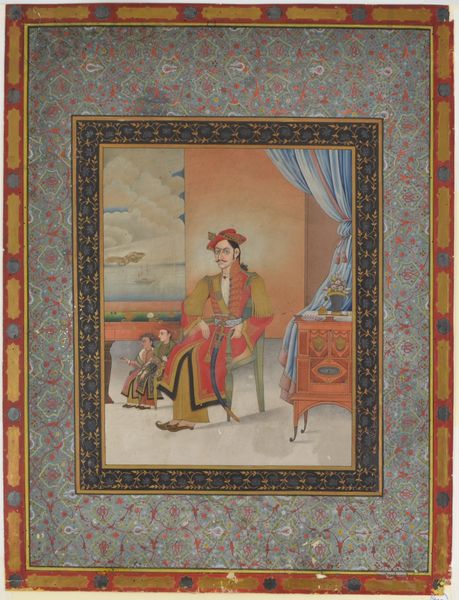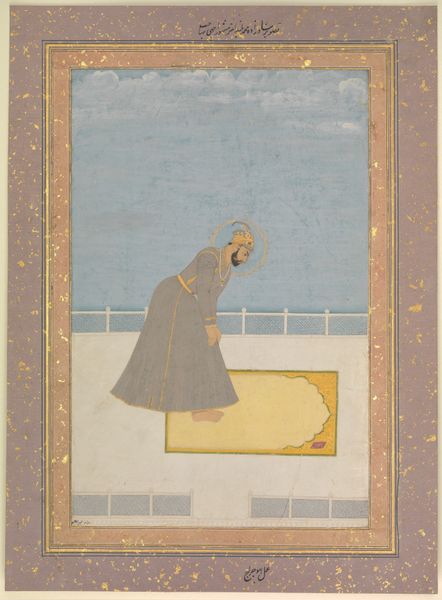
"Portrait of Khan Dauran Bahadur Nusrat Jang", Folio from the Shah Jahan Album 1505 - 1665
0:00
0:00
painting, watercolor
#
portrait
#
water colours
#
painting
#
figuration
#
watercolor
#
orientalism
#
men
#
islamic-art
#
academic-art
#
miniature
#
profile
Dimensions: H. 15 5/8 in. (38.9 cm) W. 10 1/4 in. (26 cm)
Copyright: Public Domain
Curator: At first glance, the muted palette and the somewhat flattened perspective give this portrait a very formal, almost iconic feel. Editor: Indeed. Here we have a folio from the Shah Jahan Album, an artwork entitled "Portrait of Khan Dauran Bahadur Nusrat Jang" dating roughly from 1505 to 1665. It’s currently housed at the Metropolitan Museum of Art. What I find interesting is how it captures the intersection of imperial power and artistic patronage during the Mughal era. Curator: It's compelling how the materials themselves – watercolors on paper – contribute to the delicate quality. This wasn't about bold brushstrokes; it was about painstaking detail. Look at the layering in his garments, the subtle rendering of the metalwork in his shield. I want to know more about where these pigments originated and how they were processed. Editor: Absolutely. And consider how a piece like this circulates within the elite social structures of the time. These weren't public works; they were commissions, symbols of status meant for display within a very controlled environment, influencing perceptions and consolidating power. Curator: That makes me wonder about the labor involved. Someone spent hours, maybe days, just on those floral borders. It speaks to the availability of resources – both material and human – that allowed for this level of dedication to craft. Editor: Right, and that craft played a vital role in projecting authority. Khan Dauran wasn't just a man; he was a representation *of* power. How that representation gets made and consumed reveals a lot about the socio-political climate. His dress, his pose with his armaments; they were crucial. Curator: Examining his weapons from a materialist perspective, I also ask, are they representative, purely ornamental, or are these the same objects this individual would actually utilize in battle? Editor: And how does this specific portrait contribute to our wider understanding of the court? Think of the other figures immortalized in the album; together, they construct a carefully curated vision of the Mughal world. Curator: It strikes me that even the relatively minimal depiction of a landscape is still suggestive. What kind of message might that be sending to audiences? Editor: I find myself pondering how an image such as this functions both within and beyond the historical moment, influencing modern-day understanding of South Asian art and history. Curator: A potent reminder to appreciate both the artistry and the complex web of forces that bring an artwork like this into existence.
Comments
No comments
Be the first to comment and join the conversation on the ultimate creative platform.
